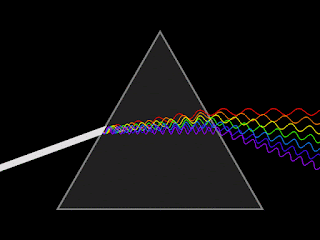SC.7.N.3.1 Recognize and explain the difference between theories and laws and give several examples of scientific theories and the evidence that supports them. (Also assesses SC.6.N.3.1 and SC.8.N.3.2.)
Also Assesses
SC.6.N.3.1 Recognize and explain that a scientific theory is a well-supported and widely accepted explanation of nature and is not simply a claim posed by an individual. Thus, the use of the term theory in science is very different than how it is used in everyday life.
SC.8.N.3.2 Explain why theories may be modified but are rarely discarded.
A scientific theory is a
well-substantiated explanation of some aspect of the natural world that has been gained by going through the scientific
method and repeatedly tested and confirmed through observation and experimentation.
THEORIES = EXPLAIN AN EVENT OR PHENOMENON
Phenomenon- A fact or situation that is observed to exist or happen, or explanation .
CELL THEORY
FRANCISCO REDI'S MEAT EXPERIMENT
SPONTANEOUS GENERATION
CELLS COME FROM PRE-EXSITING CELLS
REDIS MEAT EXPERIMENT
SPONTANEOUS GENERATION
THEORY OF PLATE TECTONICS
ATOMIC THEORY
SC.8.P.8.1 Explore the scientific theory of atoms (also known as atomic theory) by using models to explain the motion of particles in solids, liquids, and gases.
SC.8.P.8.7 Explore the scientific theory of atoms (also known as atomic theory) by recognizing that atoms are the smallest unit of an element and are composed of subatomic particles (electrons surrounding a nucleus containing protons and neutrons).
NEBULAR THEORY
BIG BANG THEORY
A
scientific law is
a statement that describes what scientists expect
to happen every
time under a particular
set of conditions. For
example, the law of gravity states that all objects in the universe attract
each other. Unlike a theory, a scientific law describes an observed pattern in
nature without attempting to explain it. Both
scientific theories and scientific laws are developed
slowly through
repeated
observation and experimentation.
LAW =DESCRIBES A PHENOMENON WITHOUT EXPLAINING IT.
Newton's Law of Universal Gravitation
KEPLER'S LAW OF PLANETARY MOTION
LAW OF SUPERPOSITION
LAW OF CROSS CUTTING -
























































